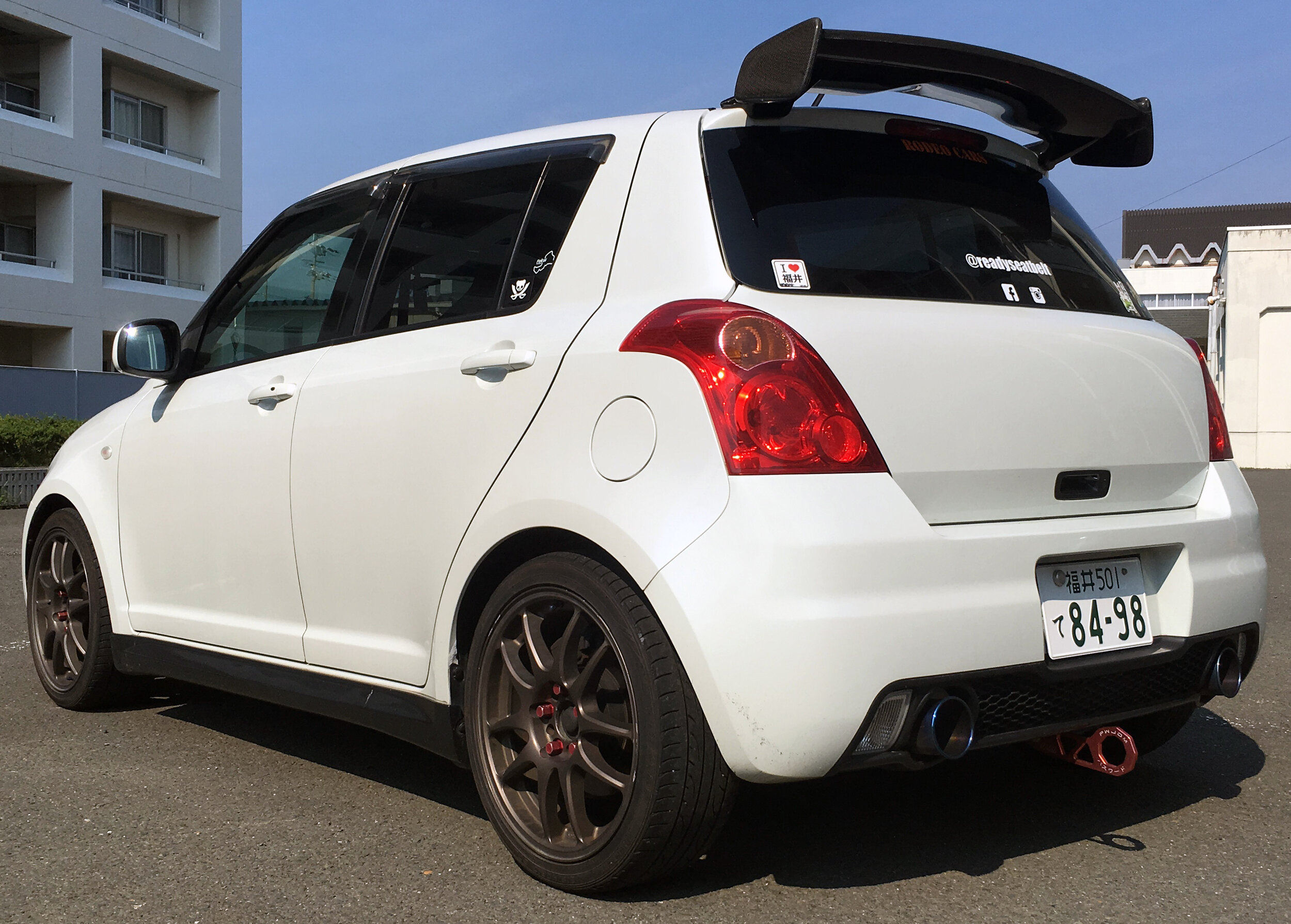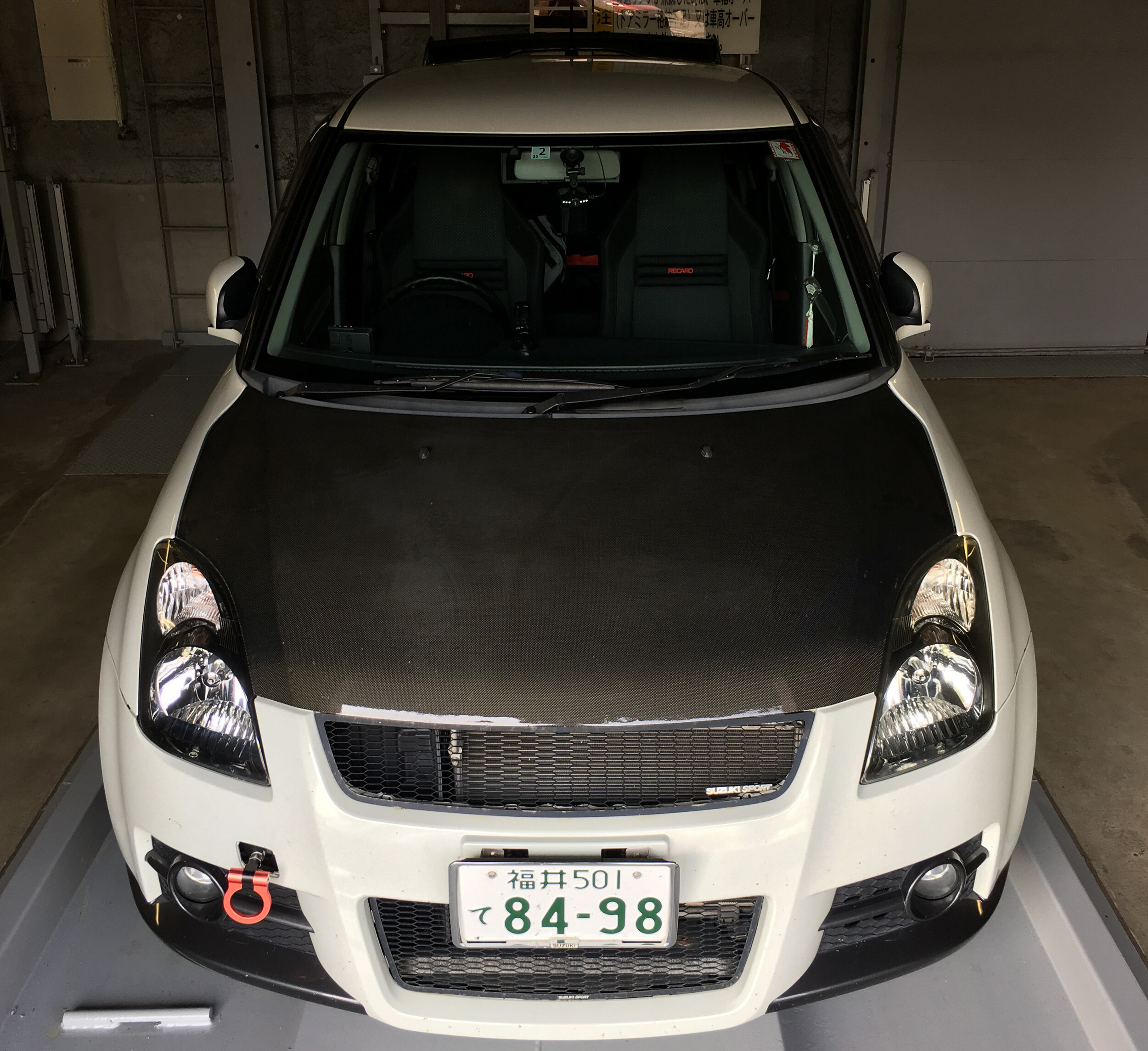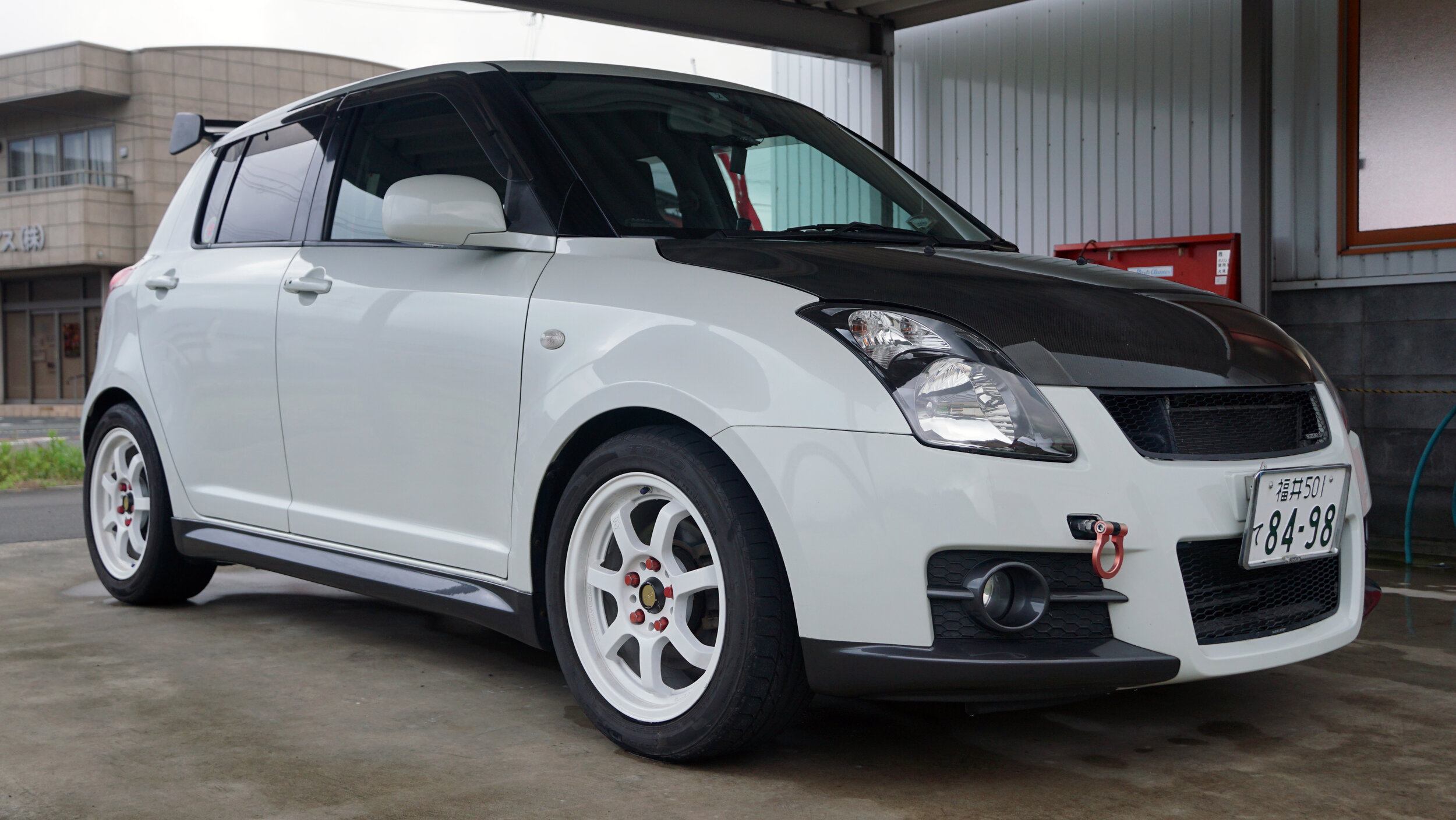[ Swift Sport ] GP Sports Exas Evo Tune Exhaust (Modifications, Part 3)
Early on, I focused on the interior touch points and bracing for my 2007 Swift Sport, but it was about time I started messing with the looks of the car. With the carbon fiber hood and spoiler, it was already very nearly perfect, though there are improvements I wanted to make.
I picked up a flush aluminum rear wiper plug off of Yahoo! Auctions to remove the rarely used rear wiper. This simple, cheap part really cleaned up the back window end.
The next two small, but quite noticeable parts I ordered were front and rear tow hooks. I admit these were added for primarily cosmetic reasons, but they do serve a purpose on a track day. If I ever had an off-road excursion and the car needed to be pulled away, having two easily identifiable tow points are a necessity. Not to mention it could prevent further damage to other bits of bumper bodywork if a tow truck needed to latch on bottom frame points.
Fine, fine, I’ll concede they are purely cosmetic. This car isn’t likely to be tracked anytime soon, but these tow hooks do attract a lot of attention from non-car fans. This is probably my most inquired-about modification. I’ve probably had a dozen people ask me, “why?” And my answer is always, “Because race car.”
For the rear, I picked up an aluminum universal rear tow hook which clamped easily on the bottom rear tow hook. Not only is it potentially useful on a track, as it sticks out past the muffler tips and bumpers, it is also a preventative safety device. Backing up into tight parking spots is the norm here in Japan and should I ever get too close to a wall or low curb, the tow hook will be scraped or damaged instead of the bumper.
The front tow hook is a screw-in design that can attach to both the threading here in the front and to a hidden threaded hole in the lower rear crash beam as well. However, as this rather cheap piece is aluminum, it is definitely not for actual towing use. It will likely be damaged or deform under heavy tow stresses so essentially this part is 100% for looks only. The car does come with an actual, non-folding tow hook in the tool box in the trunk, so this piece can be removed easily and the other hook bolted in without tools.
I really enjoy the nice, reasonable sound of the Fujitsubo Authorize R exhaust, but not enough for me to keep it. I wanted a throatier sound, so after listening to several dozen test clips online of other various manufacturers, I narrowed down my choices. The Suzuki Sports, HKS, and Trust exhausts were too quiet and barely louder than the Fujjitsubo, if at all.
I finally came across GP SPORTS, which I had not heard of prior, but with a bit of research, it turns out they are quite prolific in Japan, making a huge range of exhausts for many Japanese cars. I heard a few clips of their dual exhausts on other car models and I was impressed. Not to mention, the titanium tips really added a gorgeous, sporty look. Eventually, I came across a great deal on a used unit from Upgarage for a steal at 39900¥ ($372 USD) in absolutely gorgeous condition. There was no way this exhaust had to be used more than a few thousand kilometers.
The exhaust was also surprisingly lighter and absolutely beautiful on the car.
It reminds me of my old HKS Legamax exhaust on my Evo X, but this one is way louder and deeper. The sound under load and deceleration is nice and throaty. There is a more pronounced growl in the cabin with the windows down, but not significantly annoying with the windows up and there is minimal drone. Passengers, particularly those sitting on the rear seats, complain that it is a bit loud when I’m driving aggressively. Certainly a good thing in my opinion. Idling decibels are only a fraction louder, very important in traffic and when I spend the minute or two to warm up my car in the morning.
You can hear it for yourself in the above clip. In a word: Perfect.
I really love the look of my WORK Kiwami wheels, but the thin, multi-spoke look doesn’t quite go with the bulbous, plain panels of the Swift’s bodywork. Smaller diameter wheels also look better and ride softer as a daily driver, so I looked around for 16” wheels. I was lucky to find some RAYS Gram Lights 57 wheels, wrapped with grippy Toyo DRB tires, also off of Upgarage for a great price of 40000¥ ($372 USD). They are the perfect size, offset, and fit for my Swift.
While they came in reasonably good condition, I figured a few coats of paint would really make them pop. Many layers and a long while later, here are the results.
If I say so myself, the white looks amazing on my Pearl White car.














